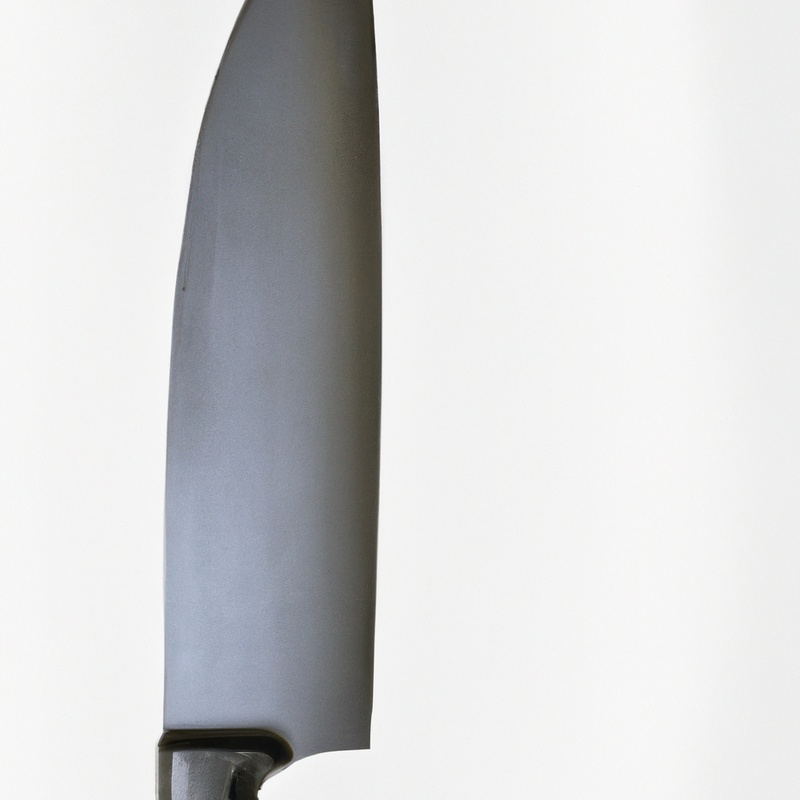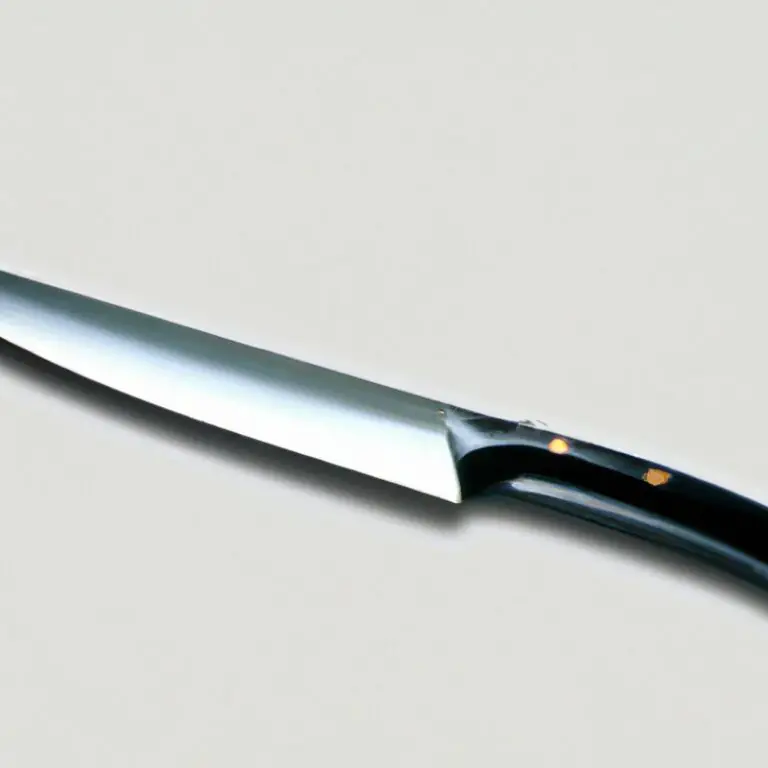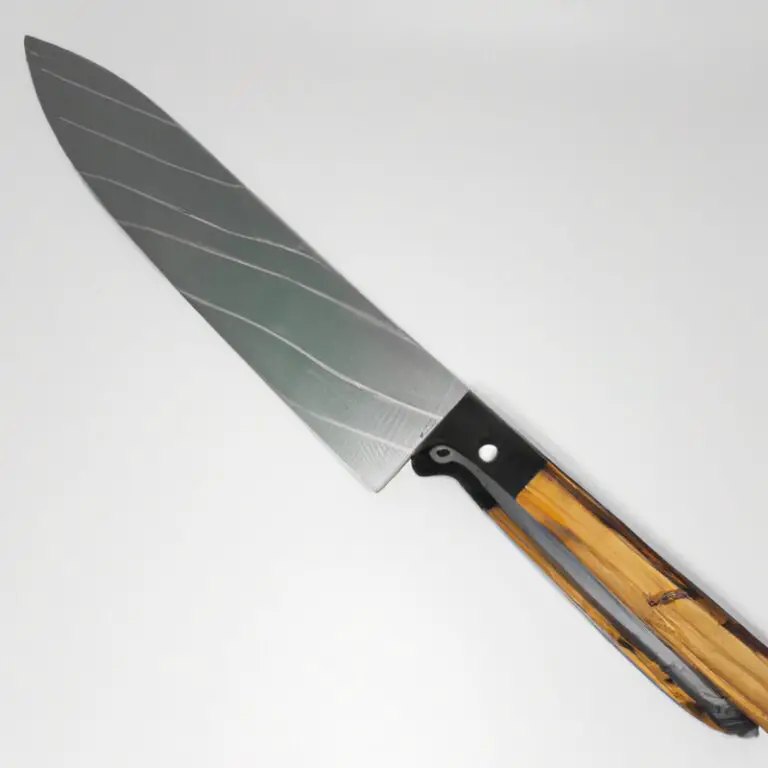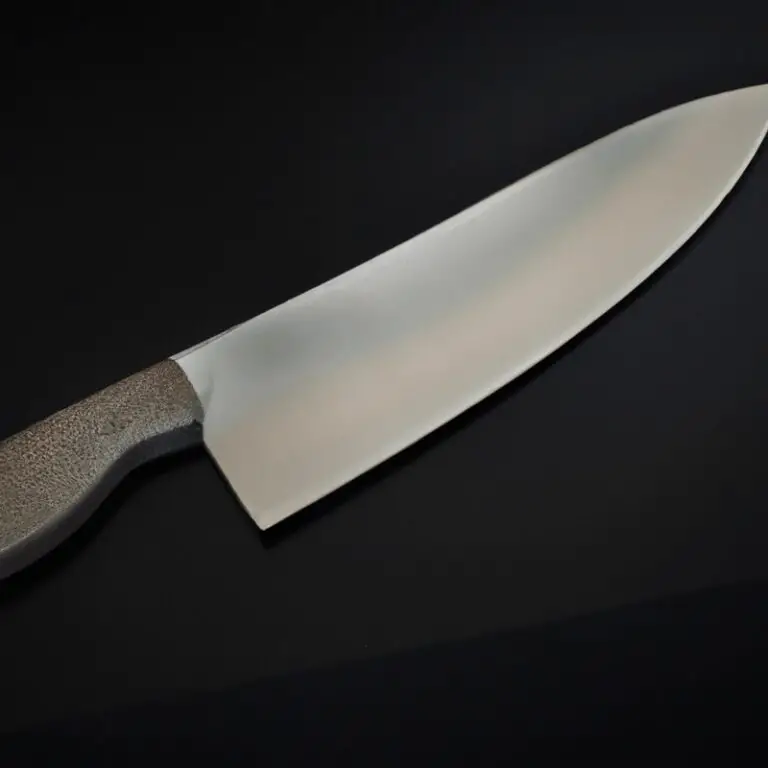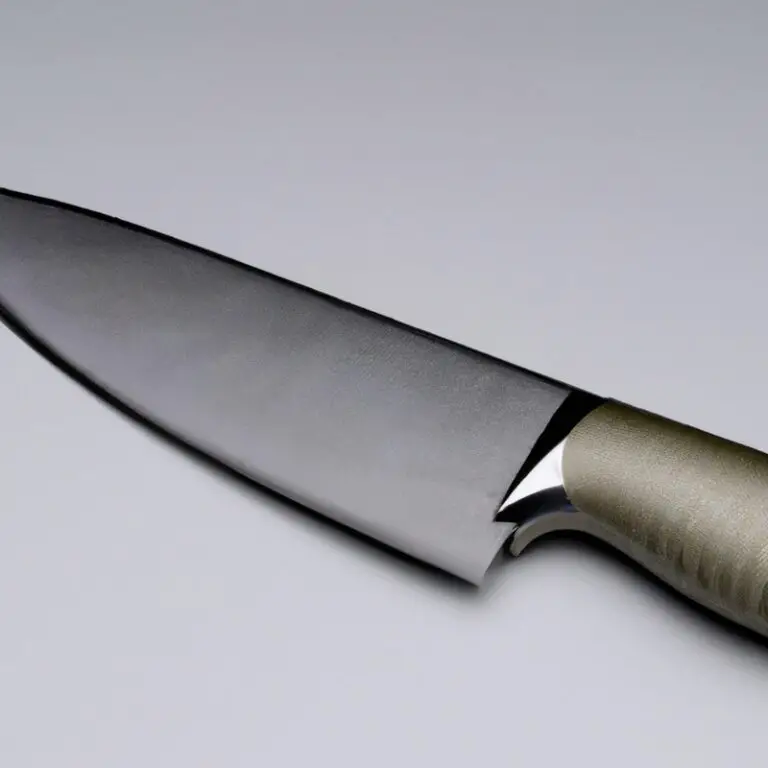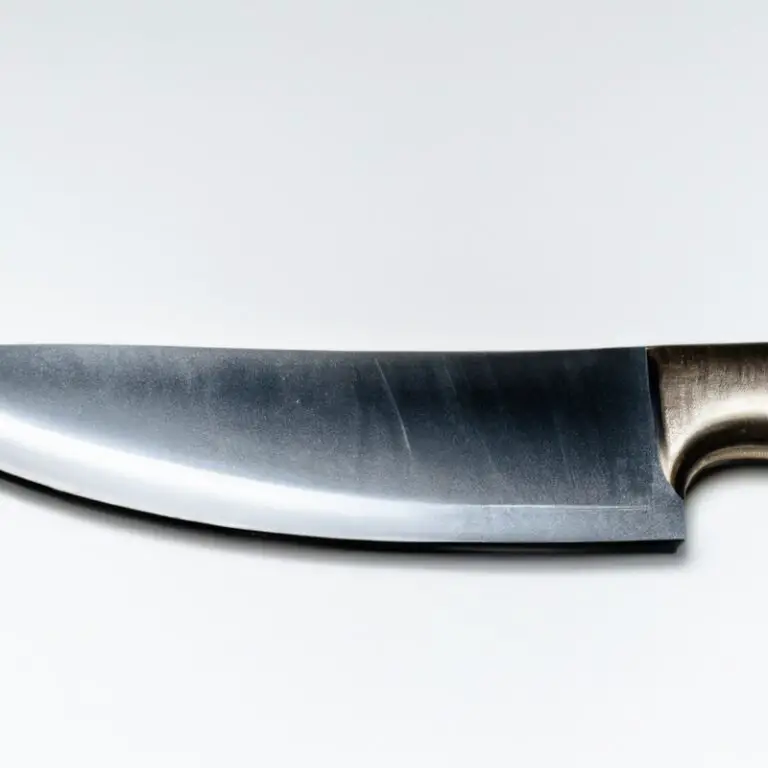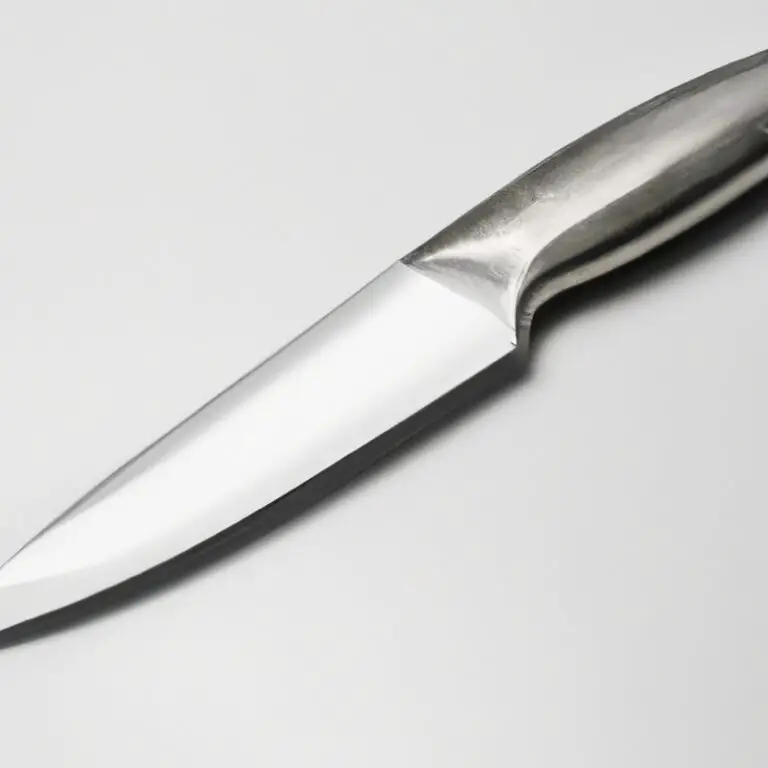How To Maintain The Edge Of a Gyuto Knife? Sharp!
Key Takeaways:
- Regularly sharpen and hone your Gyuto knife to maintain its sharp edge.
- Be mindful of the cutting surface and avoid using it on hard surfaces or bones.
- Store your Gyuto knife in a sheath or on a magnetized strip to prevent damage to the blade.
- Use a quality cutting board and maintain a proper cutting angle for optimal edge retention.
Are you tired of your Gyuto knife losing its sharp edge? A dull knife not only makes cooking a frustrating experience but also poses a safety hazard.
As a chef, I understand the importance of keeping my gear in top condition.
In this article, I will provide you with practical tips on maintaining your Gyuto knife’s sharp edge through regular maintenance, cleaning, and storage. Whether you’re a seasoned chef or a home cook, this guide will help you achieve razor-sharp cuts for a seamless cooking experience.
| Method | Pros | Cons |
|---|---|---|
| Sharpening Stone | Yields a razor-sharp edge | Requires significant skill and practice |
| Ceramic Sharpening Rod | Quickly sharpens the edge | Slightly less sharp than a stone-sharpened edge |
| Honing Steel | Maintains the edge by realigning microscopic teeth | Does not sharpen a dull blade |
| Whetstone | Can be used to sharpen and hone | Requires time and patience for best results |
What is a Gyuto Knife and Why It Needs Maintenance?
A Gyuto knife is a Japanese chef’s knife that is versatile and suitable for a variety of cutting tasks. It typically has a thin and sharp blade, ranging from 7 to 12 inches in length and a pointed tip, making it perfect for slicing, dicing, and chopping.
To maintain its unique cutting ability and increase its lifespan, it needs regular maintenance.
Gyuto knives can lose their sharpness due to frequent use, improper handling, and storage. Therefore, proper cleaning, honing, sharpening, and storage of your Gyuto knife are crucial to maintain its sharp edge and increase its longevity.
Neglecting its maintenance could result in a dull and unsafe blade that could cause injuries during use.
When to Sharpen Your Gyuto Knife?
Knowing when to sharpen your Gyuto knife is crucial to maintain its sharpness and longevity. The frequency depends on how often you use it and the type of food you cut.
Generally, it is recommended to sharpen it every 2-3 months of regular use.
However, you should also consider sharpening it whenever you notice signs of dullness, such as difficulty in slicing through food or increased pressure needed to cut. Another way to check the sharpness is doing a tomato or paper test.
If the knife struggles to cut through the tomato or tears the paper instead of slicing it easily, it’s time to sharpen it.
Remember, a sharp knife is not only safer to use but also makes your tasks more efficient and accurate. Therefore, it’s essential to pay attention to the signs and keep the blade sharp and well-maintained.
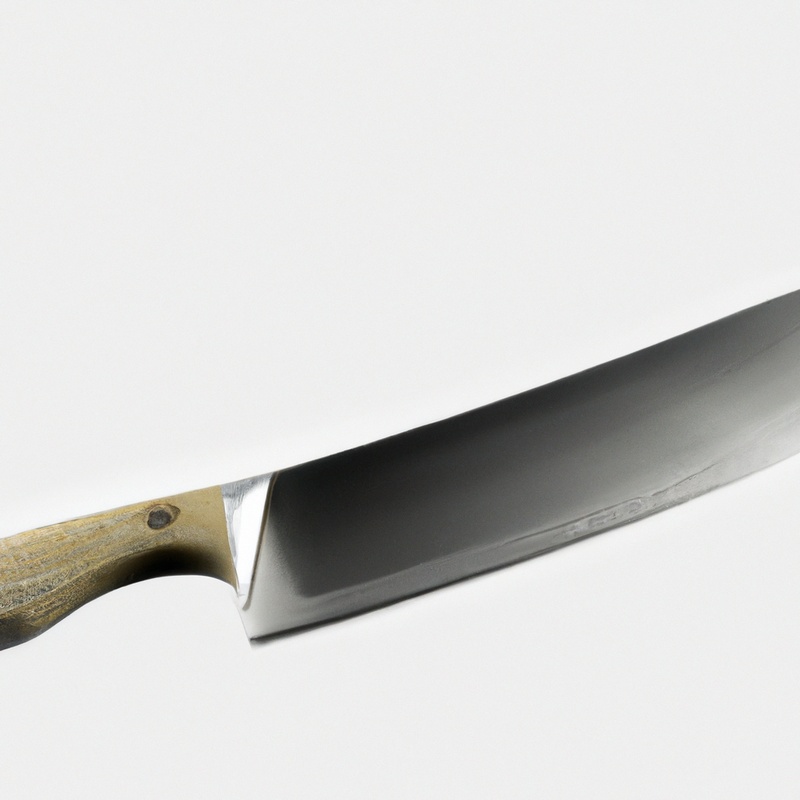
How to Check Your Gyuto Knife’s Sharpness?
To check your Gyuto knife’s sharpness, you can perform the paper test or the tomato test. For the paper test, hold the knife at a 20-degree angle and try slicing through a piece of paper.
If the blade cuts smoothly and effortlessly, it is sharp enough.
If it tears or shreds the paper, the blade needs sharpening. For the tomato test, use a ripe tomato and try slicing through the skin.
If the blade cuts through the tomato without crushing it, the knife is sharp enough.
If it struggles to cut or crushes the tomato, it needs sharpening. Regularly checking the sharpness of your Gyuto knife is vital to ensure safe and efficient cutting.
How to Sharpen a Gyuto Knife with a Whetstone?
To sharpen a Gyuto knife with a whetstone, follow these steps:
- Soak the whetstone in water for at least 15 minutes.
- Place the whetstone on a stable surface, with the coarse side facing up.
- Hold the knife at a 10 to 15-degree angle, with the edge touching the stone.
- Apply light pressure and make circular movements along the blade, starting from the heel and moving towards the tip. Repeat on the other side.
- Flip the whetstone to the fine side and repeat the process.
- Run the knife through a honing rod to finish and straighten the edge.
- Clean the knife and store it properly.
Keep in mind that sharpening a knife with a whetstone takes practice and patience. It’s also important to use the correct angle and pressure, as well as to keep the blade lubricated with water or oil to prevent damage.
How to Polish Your Gyuto Knife?
Polishing your Gyuto knife is an essential part of maintaining its optimal performance and prolonging its lifespan. To polish your Gyuto knife, you will need a polishing compound and a leather strop.
First, apply the polishing compound to the leather strop and spread it evenly across the surface.
Next, hold the knife edge at a 20-degree angle to the strop and apply light pressure while stroking the blade towards the edge. Repeat this process on the other side of the blade for an equal number of strokes.
Finally, wipe the blade clean with a soft cloth to remove any remaining compound.
Remember to avoid using too much pressure and always keep the blade at a consistent angle to prevent damaging the edge. Polishing should be done regularly to maintain the knife’s edge and improve its cutting ability.
How to Use a Honing Rod to Maintain Your Gyuto Knife’s Edge?
To use a honing rod to maintain your Gyuto knife’s edge, follow these steps: Step 1: Hold the honing rod vertically with your non-dominant hand. Step 2: Place the heel of your Gyuto knife at the base of the honing rod.
Step 3: Angle the blade to around 15-20 degrees and pull it down to the tip while sliding it down the honing rod.
Step 4: Repeat this process on the other side of the honing rod with the opposite side of your Gyuto knife. Step 5: Repeat this process 2-3 times on each side of the honing rod.
Remember to use consistent pressure and speed throughout the process.
It is also important to keep your honing rod clean and smooth to avoid damaging your Gyuto knife. By honing your Gyuto knife regularly, you can maintain a sharp edge and prolong the life of your blade.
How to Clean and Store Your Gyuto Knife?
Cleaning your Gyuto knife is an important aspect of its maintenance. After each use, wipe the knife blade and handle with a damp cloth to remove any debris or oils.
Do not soak your knife in water as it can damage the blade.
To store your Gyuto knife, always use a knife sheath, knife block or magnetic knife rack. Avoid storing your knife in a drawer alongside other utensils as it can damage the blade and dull the edge.
It’s also important to sharpen your Gyuto knife regularly to maintain its edge.
Keep it away from acidic or salty foods, which can cause rusting and corrosion. Follow these simple tips to keep your Gyuto knife in excellent condition for years to come.
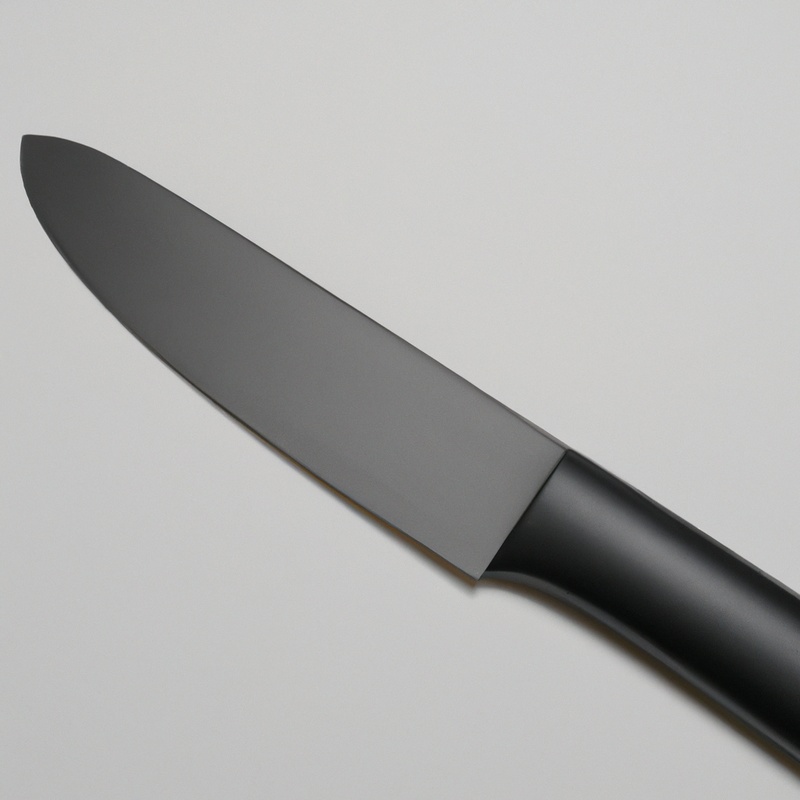
How to Avoid Common Mistakes While Maintaining Your Gyuto Knife?
To avoid damaging your gyuto knife during maintenance, it’s important to know which mistakes to avoid. Here are some tips to keep in mind:
- Don’t use a dishwasher to clean your gyuto knife as the heat and harsh detergents can damage the blade.
- Avoid using hard or abrasive surfaces to sharpen your knife as they may cause the blade to become coarse and dull.
- Don’t use a honing rod excessively as it can damage the blade’s edge and lead to premature dulling.
- Avoid storing your knife in a drawer with other utensils as they can cause scratches and nicks on the blade’s edge.
- Don’t use a dull knife as it can slip and cause injuries while cutting.
By following these simple tips, you can prolong the life of your gyuto knife and ensure that it remains sharp and safe to use.
How Frequently Should You Sharpen Your Gyuto Knife?
To maintain the edge of your Gyuto knife, it is crucial to sharpen it regularly. The frequency of sharpening depends on how often you use the knife and the hardness of the materials you cut.
Professional chefs usually sharpen their Gyuto knives weekly to maintain their sharpness.
For home cooks, sharpening the knife once every month or two should suffice. However, if you notice that the knife has become dull, it is best to sharpen it immediately, rather than continuing to use a knife with a dull edge.
To determine if your knife needs sharpening, run your finger along the blade’s edge carefully.
If you feel any nicks or irregularities, it’s time to sharpen the knife. Additionally, if your knife is no longer cutting through food effortlessly, it’s a sign that it needs sharpening.
In summary, for optimal performance, sharpen your Gyuto knife regularly, as per your usage frequency.
You can also refer to the manufacturer’s instructions for their recommended sharpening frequency.
Do’s and Don’ts of Gyuto Knife Maintenance
Dos and Don’ts of Gyuto Knife Maintenance: Do:
- Sharpen your Gyuto knife regularly using a whetstone.
- Clean your Gyuto knife with mild soap and water immediately after use.
- Use a honing rod before or after each use to maintain the knife edge.
- Store your Gyuto knife in a knife block or sheath to protect the blade from damage.
- Dry your Gyuto knife thoroughly before storing it.
- Use cutting boards made of soft materials like wood or plastic to avoid dulling the blade.
Don’t:
- Use a dishwasher to clean your Gyuto knife, as it can damage the blade.
- Use a glass or ceramic cutting board, as they can dull the knife quickly.
- Use your Gyuto knife to cut bone or frozen food, as it can damage the blade.
- Store your Gyuto knife without a sheath or knife block, as it can damage the blade and cause injuries.
- Put the knife in direct sunlight or high temperatures, as it can damage the blade.
- Use an electric knife sharpener, as it can damage the blade and take off too much metal.
By following these simple dos and don’ts, you can easily maintain the edge of your Gyuto knife and keep it in excellent condition for years to come.
Final Verdict
Taking care of your Gyuto knife is essential to ensure its longevity and optimal performance. Maintaining the knife’s sharpness requires a regular sharpening routine, honing the edge with a rod, and polishing the blade.
Remember to also clean and store your knife properly to prevent damage.
By following these steps and avoiding common mistakes, you can keep your Gyuto knife sharp and in excellent condition. We hope this guide has been helpful, and we encourage you to put these maintenance tips into practice to enhance your cutting experience.
Trust us, your Gyuto knife will thank you.

